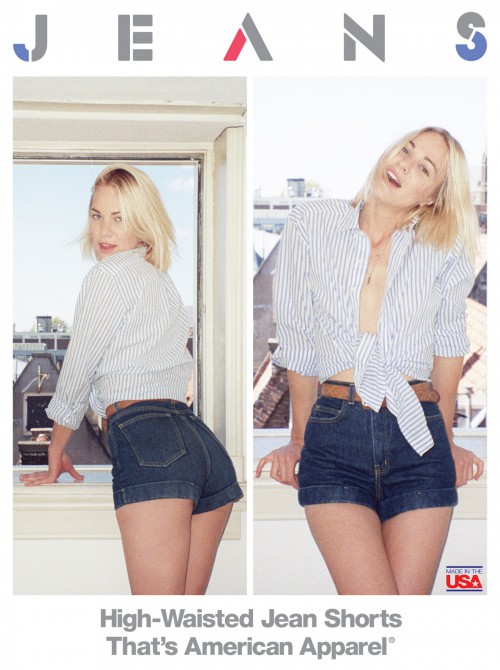The popular retail clothing store American Apparel has unsurprisingly been caught, yet again, red-handed in the promotion of the shock-value vulgarity it has become known for.
Known to many as an alternative shop, it’s a store where the rebellious, yet uniformly privileged, 18 to 20-something-year-olds can purchase a mesh top for $45, yet due to its poor quality pass it off as a t-shirt they found in a garbage bin. Women are also partial to cotton dresses that barely make it past their hips, are one-wash friendly, unless said woman is on a week to week shrinking diet, or jeans that manage to fit girls who are 5’3” on a good day and have never passed the 109-pound mark on the scale.
The most recent outrage? A t-shirt was recently showcased that depicts a female’s vagina during its menstruation period. Girl power! Right? Not really.
There could be the case made that this t-shirt, so bluntly depicting an aspect of womanhood that still makes many members of society blush, is an empowering and assertive move.
However, this is American Apparel, a company that has made a name for itself by counteracting any amount of tact, feminism or positive messages.
Having first opened a retail store on Sunset Boulevard in Los Angeles in 2003, it has had 10 years to shock and offend women all over the world.
The company line has always embraced a grossly, beer-guzzling, dirty-but-too-cool-to-care attitude, displaying this as a way to sell its clothes as well as their brand.
Over the years, American Apparel has never been shy about showing crudeness in its advertisements. The ads on its shopping websites show pictures of models who seem to be instructed to display their bodies rather than the clothing they’re selling. There are numerous pictures of models on their hands and knees, models in countless leotards, spread eagle on a bed. There are female models in knee-high socks, dressed in nothing else, and their back to the camera in a provocative pose. There seems to be more women modeling shirtless than otherwise, more models in demeaning poses to catch the male gaze; there’s a girl doing a split while drinking a beer. There would be a humorous absurdity to the marketing campaign if they were not overwrought with sexism.
One of American Apparel’s features is that some of their products are unisex, meaning that they are purchasable for men and women alike. However, there is a stark difference between how the male models pose opposed to the females. Men pose with their shirts on, their pants buttoned, their hair stylish; the girls are walking examples of how sex sells. More often than not, their shirts are unbuttoned with nothing underneath, tongues out, hair mussed; all in the hopes that the half-awake female model looks as disheveled and debauched as humanly possible.
If any other brand or distributor had thought up this idea it could have found a way to make it work: it’s 2013, and why shouldn’t women embrace every facet of ourselves? This is not the 1960’s, where to admit this type of subject was vulgar and abhorrent by its very nature. 2013 is a year when women should be allowed access to their own sexuality without being turned into sex objects, where women should be allowed to embrace what makes them who they are without being diminished or marginalized.
Yet again, it is American Apparel whose ads picture a nearly naked female model with the words “Find’m Hot, Leave’m Wet” written above them. So we may have to wait until 2014 for any progress. Until then, avoid American Apparel for the betterment of us all.








